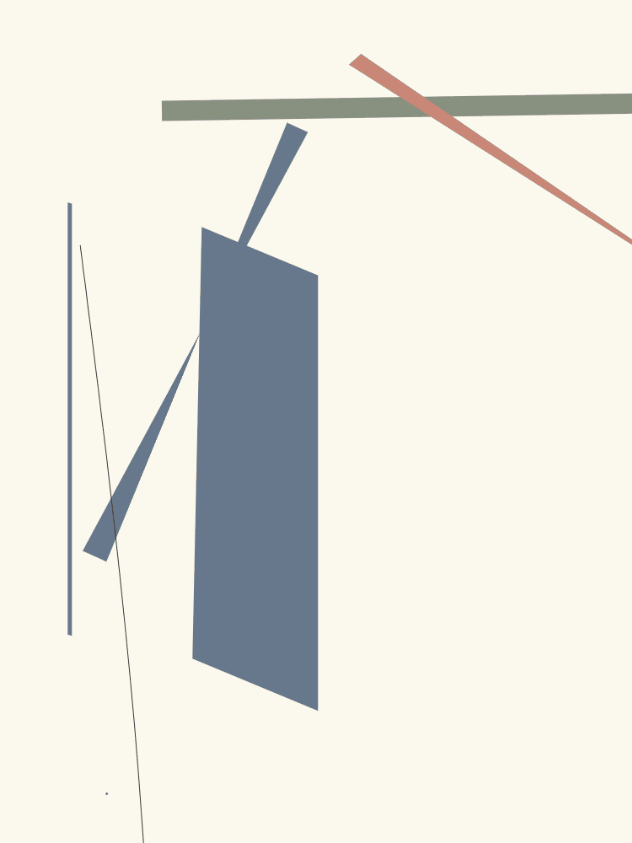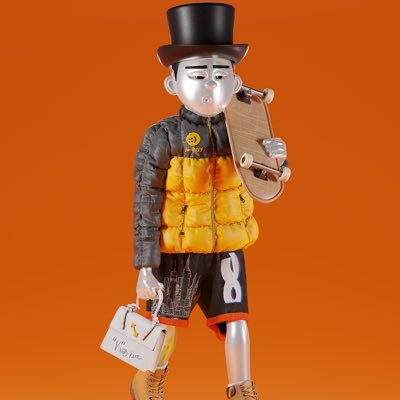Andrew Mitchell is a US based generative artist and the Co-Founder of Mitchell and Yun Studios. To date, he has created and sold out 8 generative art collections, spanning more than 1,000 pieces of art. All his works is created by code.
Could you tell us about your story and how you got introduced to the NFT space?
I was involved in the crypto scene back in 2017, but the only NFT I remember from that time was CryptoKitties. After losing all my money I took a break from crypto until Grant Yun pulled me back in. Grant and I were always close friends – we used to talk about his art together when I lived in Wisconsin.
On one of my trips back to visit him, he showed me some Art Blocks collections (props to Geometry Runners) and mentioned how it was all built with code. Luckily, I had some history using Processing (the coding language created by Casey Reas), so getting into the code-based art scene was a seamless transition. The rest is history – Grant and I formed Mitchell and Yun Studios and from there my journey into the NFT space began.

What inspired you to start creating NFTs?
I grew up near Washington DC and was blessed to have easy access to world-class art museums for free, and I am thankful to my parents for introducing fine art to me at an early age. More recently, I have been inspired by the artists over at Art Blocks as well as Grant Yun. I remember browsing their collections early on and digging into the code of some of their projects.
For my first NFT project, Primera, I found a lot of motivation in discovering how to write my own smart contracts and how to integrate it with my own website as well as the NFT marketplace OpenSea. The computer scientist in me quickly fell in love with the ease of a decentralized network.
What was the first NFT you created?
My first NFT was actually not minted by myself but by someone else. It was Primera, a collection I created with Grant Yun under our studio, MYStudios. Primera is an on-chain, generative art collection of 400 pieces. It is a study and interpretation on the fundamentals of early 20th century art utilizing 21st century blockchain technology.

Which tools do you use to create?
I use p5.js, a JavaScript library. Another tool I used for Primera was Remix, but that was for writing the actual smart contract.

What are your biggest influences or sources of inspiration?
The biggest influence to me will always be Grant. Another big influence would have to be Jeff Davis - I was deeply moved by his collection Neighborhood. It is honestly hard to choose specific influences sometimes – artists in this field are always pushing each other, like we are in one big big rugby scum.
What has been the most rewarding part of being involved in the NFT space?
The most rewarding part is having something beautiful to do every waking moment. I love that I can sit down, make art, write smart contracts, create sales bots, or just shoot the **** in the DMs on Twitter with a bunch of hilarious degens.
What advice would you give to someone starting out as a creator within the NFT space?
First: color selection trumps technique. The colors are all that matters. Second: do not have more than one unsold piece on a platform. Third: do not try to be someone else. Fourth: post a lot of Pepes on Twitter.
How do you cultivate a relationship with collectors?
I cultivate relationships with collectors in a few ways. I try to create art that is unique and shows off my own personal ideas, which allows collectors to gravitate to my work. I have never DMed a collector asking them to view my work unsolicited.
It's also important to make connections with fellow artists, who can then help promote my work to their own collectors. I find that a good way for me to make these connections is through doing smart contract and sales bot development work. The final thing I do is I always try to thank someone directly whenever they show support for my work.
What do you think are the biggest opportunities within the NFT space in the coming 5 years? Culturally, artistically and financially?
The biggest opportunity is in generative art. Generative art feels like a perfect match when minted as an NFT, and it is the art form that has seen the biggest explosion in popularity thanks to NFTs. In the traditional art world, generative art is in its infancy, but I believe that generative art will soon be recognized and appreciated by all people.
As a creator, is there something that you feel is missing in the current NFT space?
Sleep. Just kidding. The number one thing is balance. Alongside making art, artists have to do development and marketing – and it can be a little too much. Platforms like Art Blocks, GMDao, 256ART, SuperRare, Foundation, fxhash, GEN. ART and Versum (and many more) can take a lot of those pressures off the artist.

What’s the best piece of advice you have been given?
The colors are all that matters. Color is the most important thing when creating art.
Andrew Mitchell and his work can be found via the following links:
- Website: andrewmitchell.xyz/
- Mitchell and Yun Studios: mystudios.xyz/
- SuperRare: superrare.com/andrew_mitchell
- Foundation: foundation.app/@Mitchel1
- Fxhash: fxhash.xyz/u/AndrewMitchell
- Twitter: twitter.com/uncut_homes





